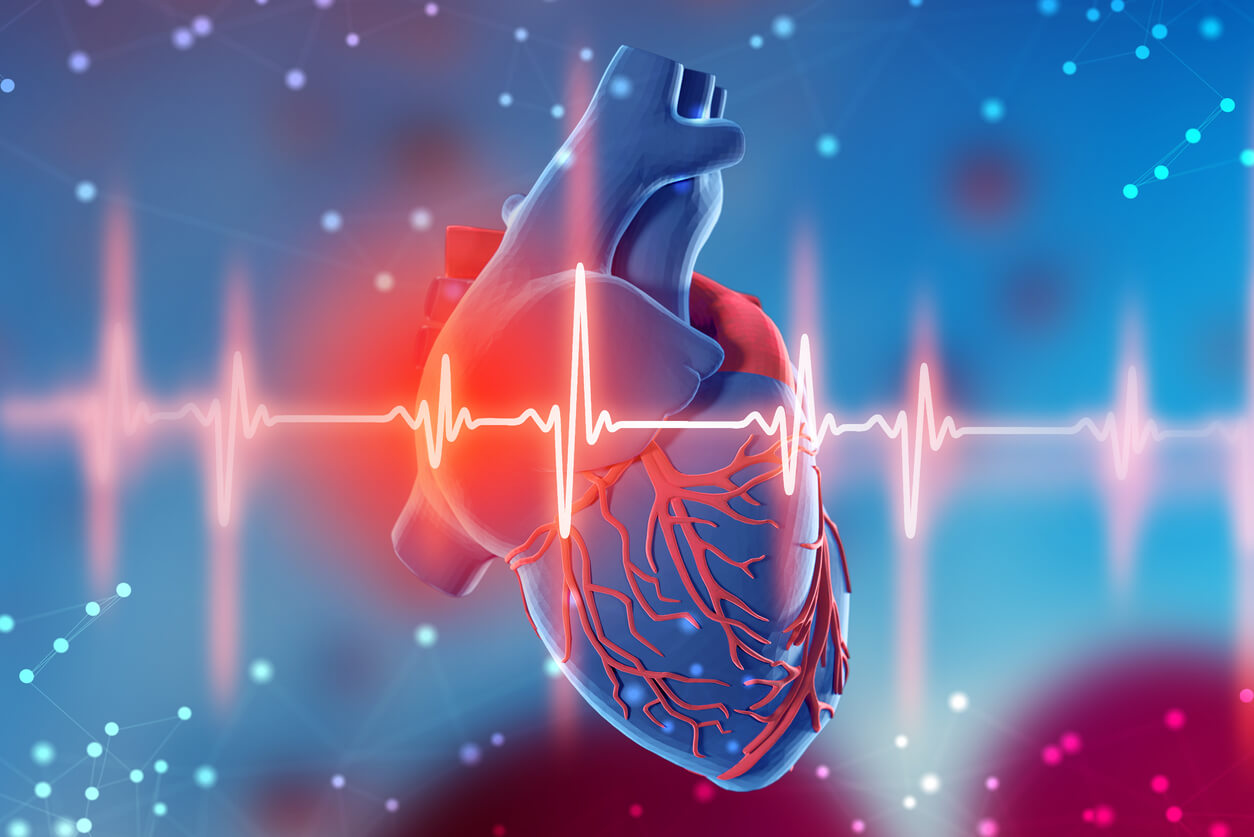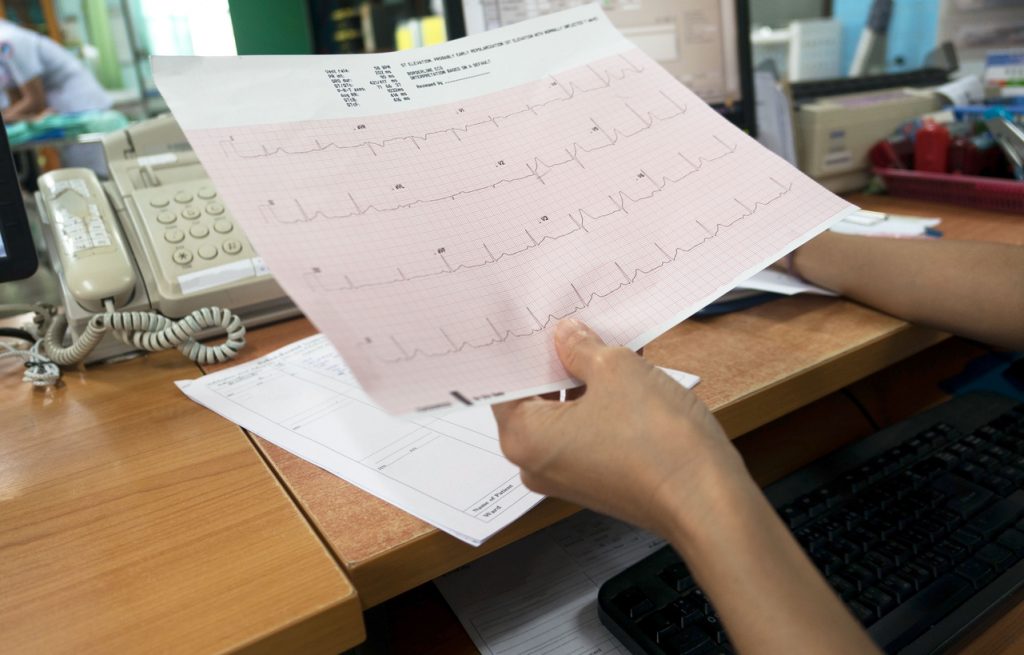
ACLS Algorithms
Preparing for your AHA ACLS algorithms certification test will likely be a part of your necessary training as a healthcare provider. ACLS protocols encompass numerous invasive procedures that involve both basic and advanced life support procedures. Typically, a certification takes 10-12 hours, and you can prepare for it ahead of time by becoming familiar with its algorithms.
The Basics of ACLS Algorithm
In the event of a cardiovascular emergency, healthcare providers need to administer life support quickly and efficiently. The ACLS algorithms are a series of steps that help medical professionals determine the best course of action in these emergencies. Using the algorithms starts with identifying the type of arrhythmia, whether that’s bradycardia, tachycardia, etc. Then, medical professionals can begin making decisions based on the type of emergency. A series of steps that respond to various potential yes/no scenarios are described by each ACLS algorithm. 2019 brought a few updates to ACLS guidelines for cardiopulmonary resuscitation and emergency cardiovascular care.
The 2019 Changes to the Current Acls Algorithm Guidelines Were Mostly Focused on Three Areas:
- Advanced airway management during adult cardiac arrest
- Use of vasopressors in adult cardiac arrest
- Use of extracorporeal cardiopulmonary resuscitation for cardiac arrest in adults
Adult Cardiac Arrest Algorithm
The most important and common ACLS code algorithm is for adult cardiac arrest. Within the algorithm, treatment focuses on two medications, epinephrine, and amiodarone. The algorithm’s flowchart divides into two primary branches, each explaining the treatment of different potential cardiac arrest rhythms. The left branch follows ACLS steps to treat ventricular fibrillation and pulseless ventricular tachycardia. The right treats asystole and pulseless electrical activity. The decision for which branch is appropriate starts with determining if the rhythm is shockable.
Post Cardiac Arrest Care Algorithm
Victims of cardiac arrest require systematic treatment post-resuscitation to ensure the best possible outcomes. After the cardiac arrest algorithm is implemented, further care procedures are outlined in the post-cardiac arrest care algorithm. Once spontaneous circulation is restored, and oxygenation is between 94 and 99 percent, the algorithm lays out a series of steps that begin with IV fluids. An ECG is prescribed after establishing a sound mental status to rule out myocardial infarction and whether the patient needs to be moved into intensive care.
Bradycardia Algorithm
Typically, a resting heart rate of under 60 beats per minute is indicative of symptomatic bradycardia among adults.
However, relative bradycardia may present if the heart rate is within normal sinus range but remains insufficient. In that case, a heart rate above 60 bpm could still be bradyarrhythmia. The bradycardia algorithm guides treating stable and unstable bradycardia. Bradycardias that require medical intervention fall into two common types: second-degree atrioventricular block type 2 and third-degree atrioventricular block. After it is identified, the priority in the algorithm shifts to determining the cause. Treating the correct cause of it is indispensable to ensure the best possible outcome for the patient.
Tachycardia Algorithm

Heart analysis, electrocardiogram graph (ECG) in hand doctor at the hospital .
A resting heart rate of 100 beats per minute or more is treated with the tachycardia ACLS algorithm. You can use this algorithm to treat both stable and unstable tachycardia. An unstable tachycardia is observed when cardiac output is impaired enough to cause serious symptoms. Stable tachycardia doesn’t produce any serious symptoms as a result of the fast heart rate.
The Three Types of Tachycardia Are:
- Supraventricular, when electrical activity to the upper chambers of the heart is imbalanced.
- Ventricular, when electrical signals to the lower chambers of the heart are causing them to contract incorrectly.
- Sinus tachycardia happens when the natural pace of the heart is faster than normal but still functions correctly.
Supraventricular tachycardia, or SVT, is the most common type. Within SVT, there are several subcategories and the most common is AV-nodal reentrant tachycardia, which is treated with vagal maneuvers and adenosine. Like the bradycardia algorithm, once the arrhythmia is detected, the priority becomes the identification of the cause or causes and the reversal if possible. From there, the algorithm moves on to identifying the symptoms caused by the tachycardia and how to treat them.
Acute Coronary Syndrome Algorithm
The acute coronary syndrome is an umbrella term that covers several signs and symptoms associated with loss of blood supply to the heart. It’s an emergency, and it can be a complete blockage, or it can be intermittent and can potentially result in tissue death in one or more parts of the heart. Symptoms such as chest pain, discomfort, pain in one or both arms, shortness of breath, nausea, and sweating can indicate acute coronary syndrome. Once it’s established, the algorithm instructs a 12-lead ECG to perform. The 12-lead ECG reading is a crucial piece of information for determining the next steps in the algorithm. After immediate treatment with medications, including aspirin, nitroglycerine, and morphine, the algorithm branches off into three scenarios depending on the ECG reading. The far-left branch of the flowchart is the most essential, describing treatment for ST-elevation present in the ECG. ST-segment elevation may indicate a transmural myocardial infarction, and the two most important interventions, in that case, are fibrinolytic therapy and PCI.
Suspected Stroke Algorithm
The most common form of stroke, ischemic stroke, has fairly typical symptoms that are easy to recognize. Use the FAST mnemonic to identify possible stroke patients. Face drooping, Arm weakness, and Speech difficulty means it’s time to call 911. In cases of ischemic stroke, the suspected stroke algorithm provides a streamlined response sequence for interventions. 87% of strokes are ischemic and can be treated successfully with early and swift interventions. Once identified, people that experience a stroke should receive prehospital interventions in the form of airway support, a prehospital stroke assessment, a blood glucose check, and the last time when the patient’s neurologic state was normal. After the patient arrives at a hospital, the most important diagnostic intervention is a non-contrast CT scan. The scan rules out hemorrhagic stroke, which requires an increased level of care. Once bleeding is ruled out, the stroke is most likely ischemic in nature, and the patient can be treated with fibrinolytic therapy. Fibrinolytic therapy, applied early, can decrease the lasting effects of strokes by dissolving clots impeding blood flow to the brain.
ACLS-Algorithms Certification
If you need ACLS certification or recertification, you should make sure that your provider is ASHI approved, and that the courses are designed for your needs. The courses must provide the most current guidelines established by the ASHI and AHA. Any medical professional can potentially benefit from an ACLS course and certification. If you have scheduling conflicts or very limited time to take the courses, AZACLS can come to you. You won’t need any additional materials other than what our courses provide. We also give you access to a BLS, PALS, and ACLS manual. Contact us today for more information about ACLS, PALS, or BLS certification and to book a class.

No Comments
Sorry, the comment form is closed at this time.